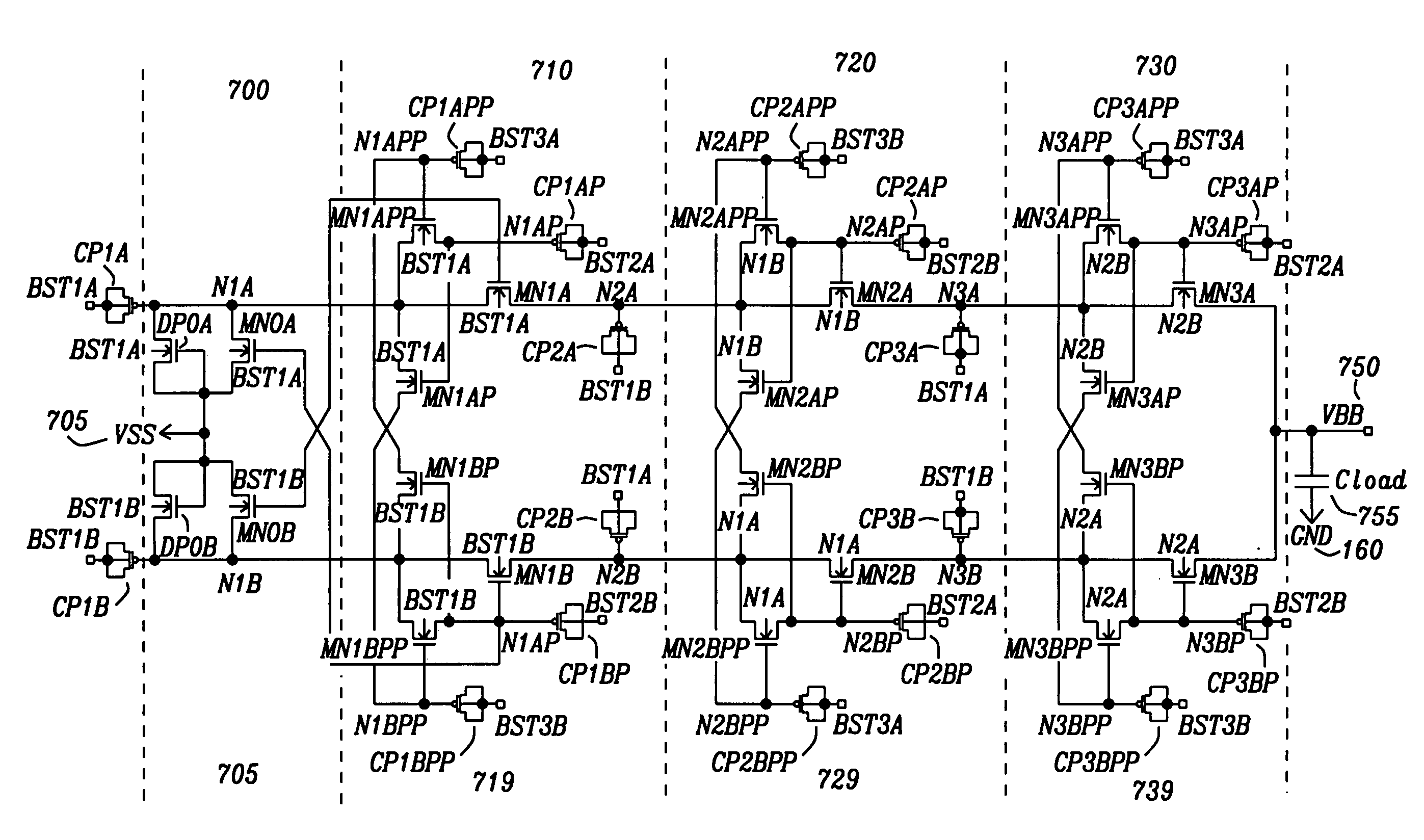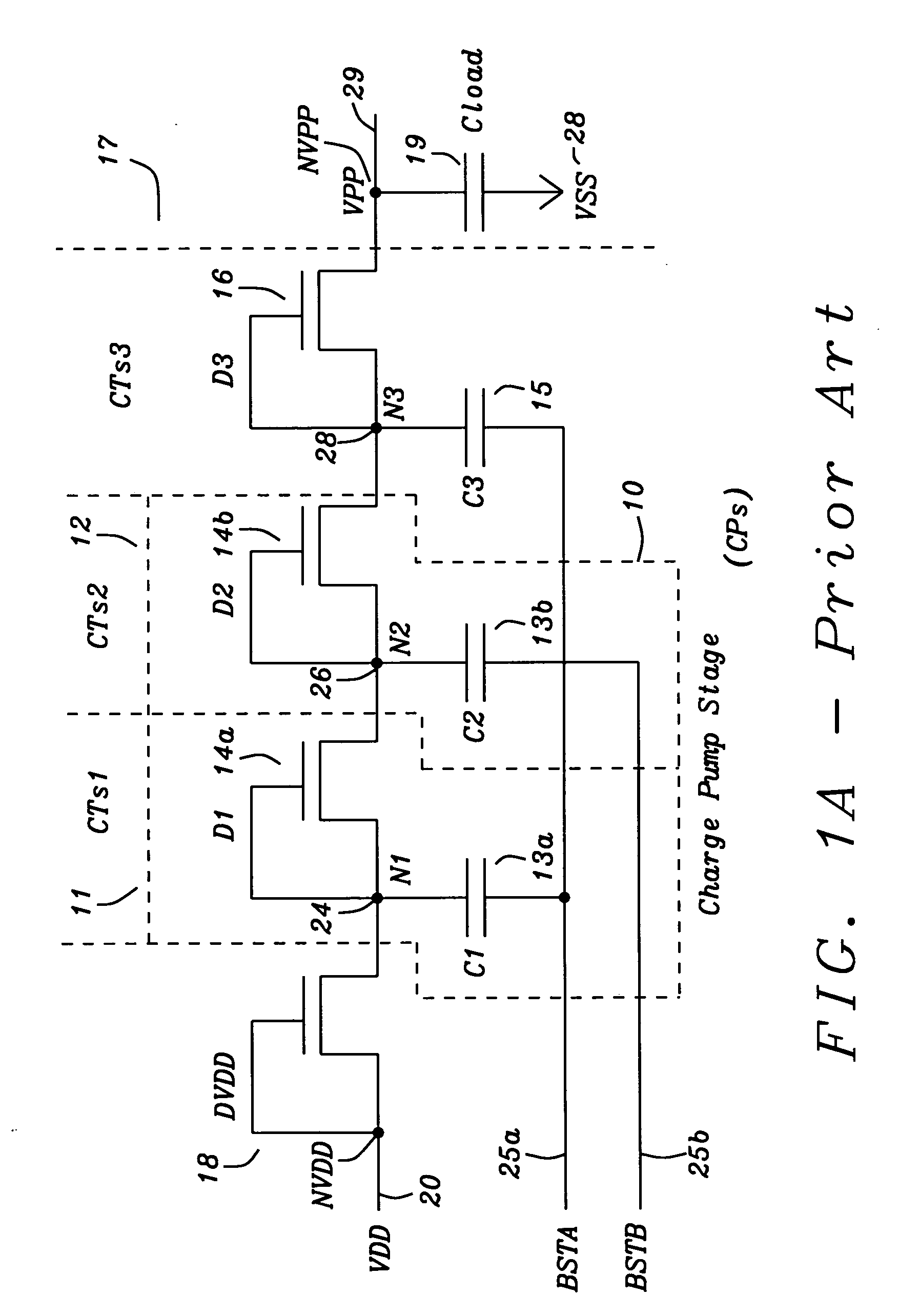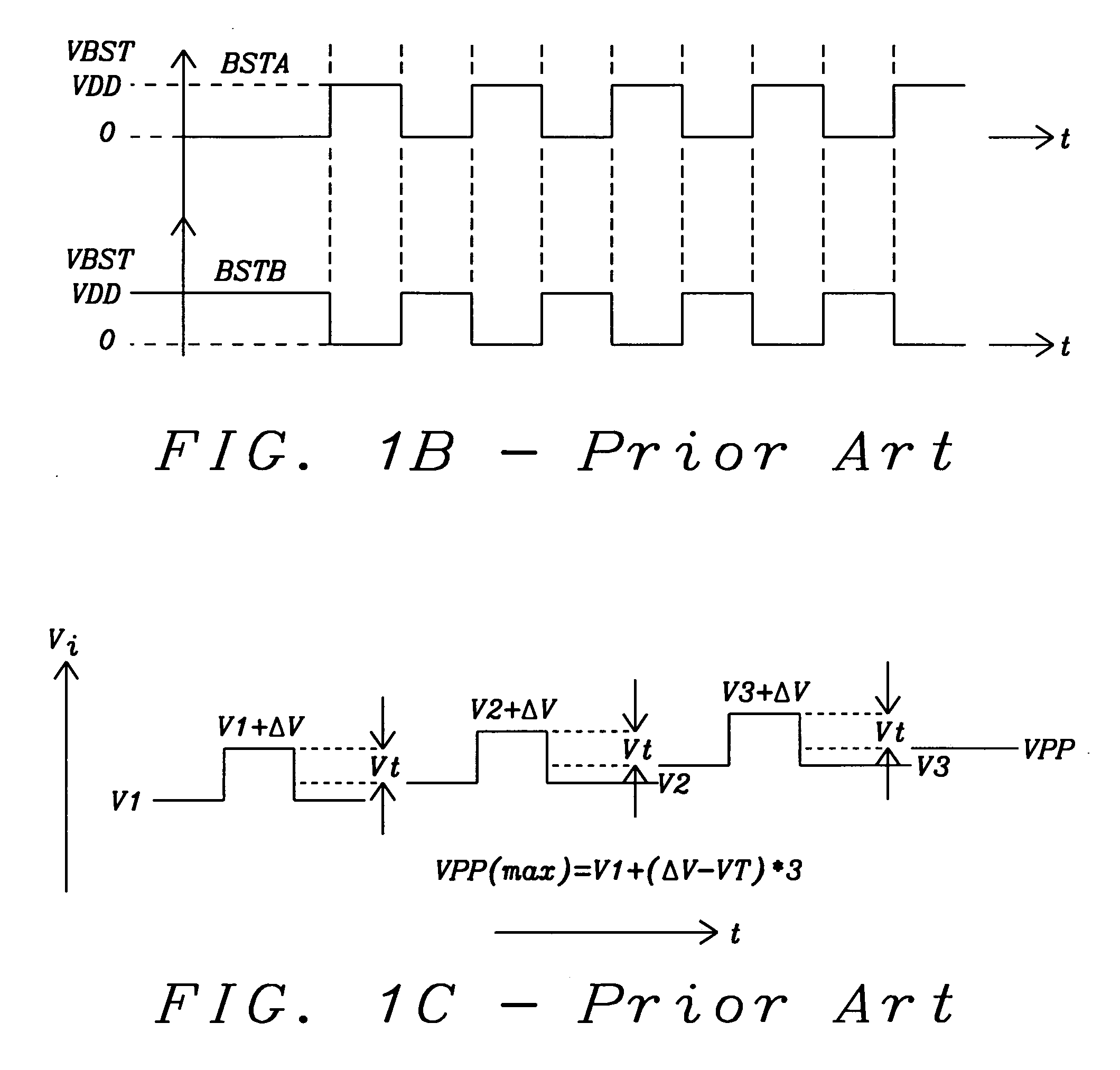Charge pump circuit for high voltage generation
a pump circuit and high voltage technology, applied in the field of capacitor voltage multiplier circuits, can solve the problems of limiting the voltage gain achieved at each pump stage, severely degrading the pumping efficiency of the multiplier, and reducing the output gain of boosting voltage to an unusable condition, etc., to achieve simple and quite regular layout, reduce transfer losses, and simplify the production of high voltage multiplier circuits
- Summary
- Abstract
- Description
- Claims
- Application Information
AI Technical Summary
Benefits of technology
Problems solved by technology
Method used
Image
Examples
Embodiment Construction
[0069]The preferred embodiments disclose novel realizations for “A New Charge Pump Circuit for High Voltage Generation” also known as voltage multiplier circuits. These circuits do exist as prior art in numerous variants but all have well-known sometimes significant drawbacks as already listed above. The technical approach for achieving the goal of avoiding most of the disadvantages is to make use of intelligent charge transfer switching (CTS) techniques i.e. replace diode connected MOSFETs by switching MOSFET structures, additionally substitute simpler anti-phase control schemes by more sophisticated multiphase control schemes in order to avoid losses during charge transfer transactions and last not least make use of an advanced technology for manufacturing the new circuits in integrated circuit implementation e.g. realizing crucial internal circuit parts of the chip as triple-well MOSFET structures. Using the intrinsic advantages of that solution—as described later on in every det...
PUM
 Login to View More
Login to View More Abstract
Description
Claims
Application Information
 Login to View More
Login to View More - R&D
- Intellectual Property
- Life Sciences
- Materials
- Tech Scout
- Unparalleled Data Quality
- Higher Quality Content
- 60% Fewer Hallucinations
Browse by: Latest US Patents, China's latest patents, Technical Efficacy Thesaurus, Application Domain, Technology Topic, Popular Technical Reports.
© 2025 PatSnap. All rights reserved.Legal|Privacy policy|Modern Slavery Act Transparency Statement|Sitemap|About US| Contact US: help@patsnap.com



